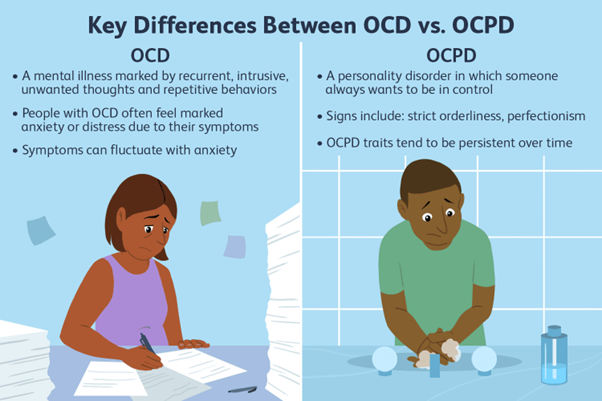A nurse is assessing a client who has obsessive-compulsive personality disorder. Which of the following findings should the nurse expect?
Goal-oriented
Provocative behaviour
Lack of empathy
Lability
The Correct Answer is A
Choice A reason:
Goal – oriented is the correct answer. Obsessive-compulsive personality disorder (OCPD) is a personality disorder characterized by a pattern of preoccupation with orderliness, perfectionism, and control. Individuals with OCPD tend to be highly organized, detail-oriented, and focused on achieving their goals. They often set strict standards for themselves and others and are driven by a strong need for perfection in all aspects of their lives.
Choice B reason
Provocative behaviour is not a characteristic commonly associated with obsessive-compulsive personality disorder (OCPD). In fact, individuals with OCPD tend to be more reserved, cautious, and serious in their interactions with others.
Choice C reason:
Lack of empathy While individuals with OCPD may struggle with interpersonal relationships due to their rigid standards and expectations, they typically do not lack empathy. They might find it challenging to understand and relate to emotions or perspectives that do not align with their own, but this is different from a complete lack of empathy, which is more commonly seen in certain other personality disorders.
Choice D reason.
Lability refers to emotional instability or rapid and extreme shifts in emotions. This is not a typical feature of obsessive-compulsive personality disorder (OCPD). Individuals with OCPD tend to be emotionally restrained and might have difficulty expressing emotions, rather than experiencing emotional lability.

Nursing Test Bank
Naxlex Comprehensive Predictor Exams
Related Questions
Correct Answer is C
Explanation
Choice A reason:
Administer epinephrine subcutaneously. This is not the necessary action to be taken. Epinephrine is used to treat severe allergic reactions (anaphylaxis). However, in this case, the client is experiencing a febrile non-haemolytic transfusion reaction, not an allergic reaction.
Choice B reason:
Place the blood bag in a biohazard bag before discarding. This is not the necessary action to be taken by the nurse. Proper disposal of biohazardous materials is essential, but in this situation, the nurse's priority is to address the client's condition and not the disposal of the blood bag.
Choice C reason:
Documentation of the transfusion reaction is crucial for the client's medical history and for future reference. The nurse should record the client's signs and symptoms, the actions taken, and any other relevant information related to the reaction.
Choice D reason
Infuse 500 ml lactated Ringer's IV.This is not necessary action to be taken by the nurse because there is no indication for infusing lactated Ringer's solution in response to the transfusion reaction described. Treatment for febrile non-haemolytic transfusion reactions generally involves stopping the transfusion, administering antipyretics (like acetaminophen) if necessary, and providing supportive care as needed.
Correct Answer is A
Explanation
Choice A reason:
Urine specific gravity is the measurement of the concentration of solutes in urine and is an important indicator of the client's hydration status and kidney function. A specific gravity of 1.035 is relatively high, suggesting concentrated urine. High urine specific gravity can be a sign of dehydration or other kidney-related issues.
Reporting this finding to the provider is crucial because it could indicate potential problems with the client's fluid balance and kidney function. The provider may need to assess further, conduct additional tests, or initiate appropriate interventions to address the client's hydration and renal status.
Choice B reason:
Prealbumin: A prealbumin level of 25 mg/dL is within the normal range (usually 15-35 mg/dL) and may not require immediate reporting to the provider. Prealbumin is used to assess nutritional status, and this result suggests that the client's nutritional status is within the normal range.
Choice C reason:
Temperature: The normal range is 36.5°-37.5°C (97.7°-99.5°F),thus it falls within normal range.
Choice D reason
Bowel sounds: Bowel sounds:Bowel sounds heard is a normal finding and indicates normal gastrointestinal function.
Whether you are a student looking to ace your exams or a practicing nurse seeking to enhance your expertise , our nursing education contents will empower you with the confidence and competence to make a difference in the lives of patients and become a respected leader in the healthcare field.
Visit Naxlex, invest in your future and unlock endless possibilities with our unparalleled nursing education contents today
Report Wrong Answer on the Current Question
Do you disagree with the answer? If yes, what is your expected answer? Explain.
Kindly be descriptive with the issue you are facing.
